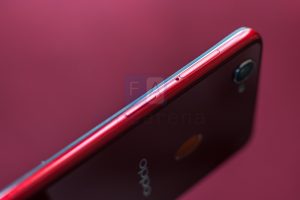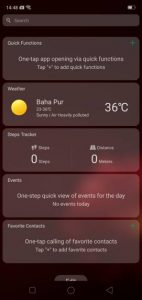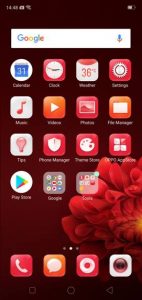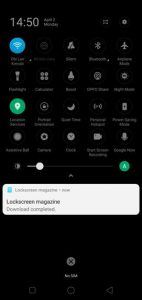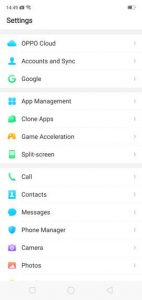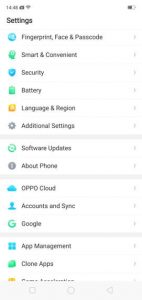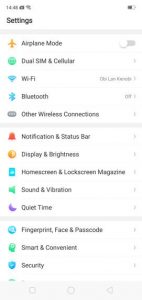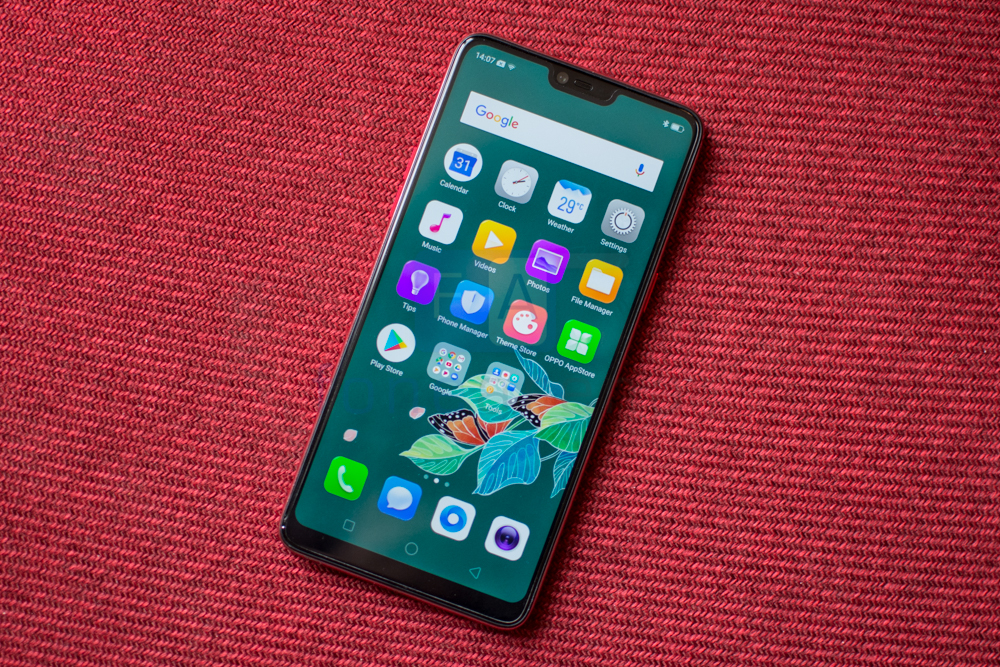
When Apple starts a trend, it doesn’t take all that long for the competition to catch up. The notch though has seen a surprisingly quick uptake. Well, here we are with OPPO’s latest, the F7 continues the tradition of being a ‘selfie expert’ while catching up on a few new trends. We’ve been spending some time with the device and here’s what we think.
OPPO F7 specifications
- 6.23-inch (2280 x 1080 pixels) Full HD+ 19:9 IPS display
- Octa Core MediaTek Helio P60 12nm processor (Quad 2GHz Cortex A73 + Quad 2GHz Cortex A53 CPUs) with 800MHz ARM Mali-G72 MP3 GPU
- 4GB RAM with 64GB internal memory, 6GB RAM with 128GB storage, expandable memory up to 256GB with microSD
- Dual SIM (nano + nano + microSD)
- ColorOS 5.0 based on Android 8.1 (Oreo)
- 16MP rear camera with LED flash, f/1.8 aperture
- 25MP front-facing camera, f/2.0 aperture, HDR, Sony IMX576 sensor
- Fingerprint sensor
- 3.5mm audio jack, Dirac HD
- Dimensions: 156 x 75.3 x 7.8mm ; Weight: 158g
- Dual 4G VoLTE, WiFi 802.11 ac (2.4GHz + 5GHz), Bluetooth 4.2, GPS
- 3400mAh (typical) / 3300mAh (minimum) battery
Design
The front of the OPPO F7 is mostly an all screen affair. There’s a 6.23-inch screen here that spans almost the entire front. While bezels along the sides are fairly minimal, there is a noticeable chin along the bottom edge.
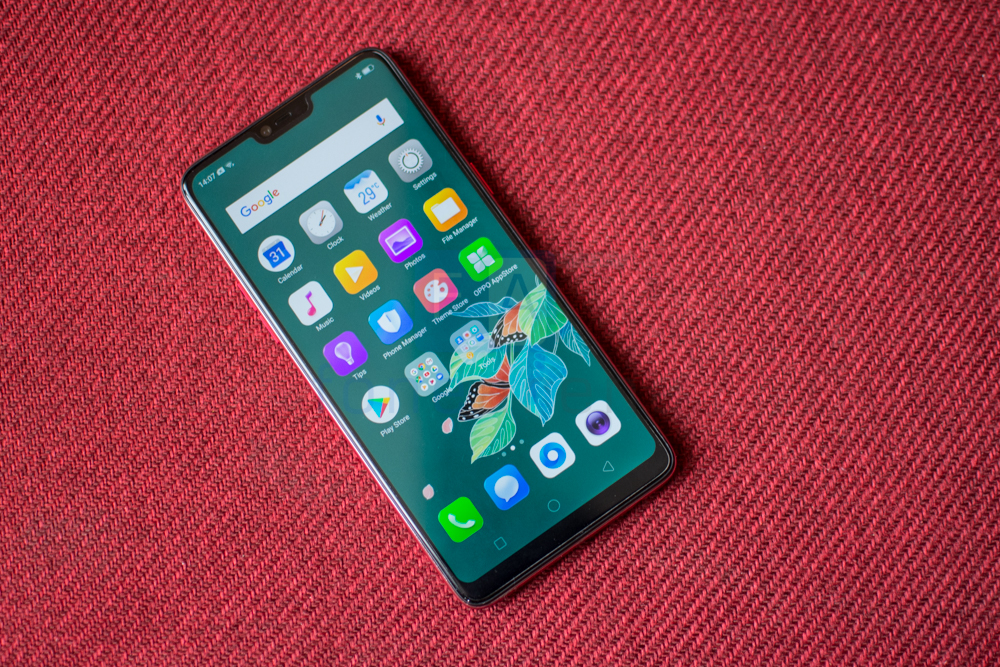
Up top, on the other hand, is a notch. OPPO has chopped parts of the upper bezel and just kept the central bit that houses essential sensors like the proximity and ambient light sensor. There’s the all-important 25MP selfie camera too that finds a spot here. Is the notch irksome? At first, yes but as a self-professed notch hater, it does grow on you. What doesn’t though is the lack of symmetry. The chin and notch combo isn’t exactly visually stunning and certainly breaks the impression of being an iPhone X clone.
Further on, the left side of the phone has the volume rockers and the right side has the power button. Along the bottom edge, you’ll find the headphone jack and a micro USB port connector. OPPO’s decision to use a micro USB port baffles the mind and is a major negative in our opinion. Sporting a 19:9 aspect ratio, the OPPO F7 manages to be very comfortable to use despite the large screen. Despite having small hands, I personally had no issues with reaching most UI elements. Except for the furthest corners, interface navigation was never really much of a hassle.
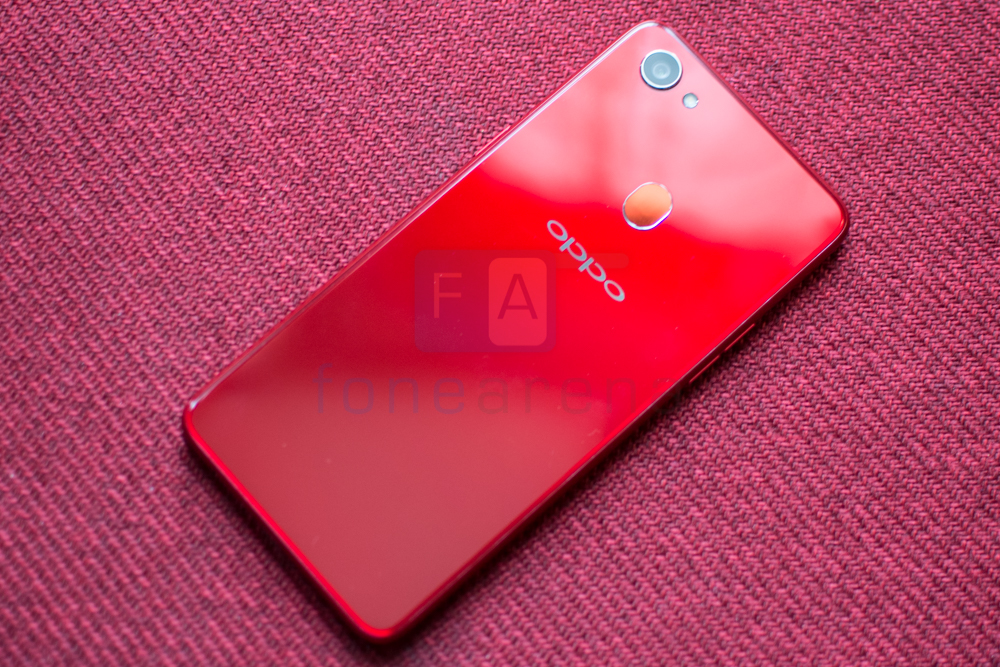
The back of the OPPO F7 is made of an extremely glossy plastic. The phone is available in red, silver and a limited edition diamond black. All the variants are glossy to the point of having a mirror finish. They also attract fingerprints, smudges, lint, and scratches. Is it beautiful? Yes but in all honesty, you’ll want to keep it protected in a case if you want it to keep it pristine for more than a few days. Towards the center, you’ll notice OPPO branding while further up is the fingerprint reader, 16MP rear camera and dual LED flash. Yes, the front camera has a higher megapixel count than the rear camera.
Software
Built on Android 8.1, Color OS 5 is a huge departure from the stock Android looks and feels. While the world moves towards minimizing the bloat on their device, OPPO has unabashedly built a software stack that rips off iOS and you know what? It resonates with the target audience and works fairly well too. Throughout our testing, we found the software to be well optimized and a rather good mix of iOS like UI navigation and Android’s feature set.
Unlocking the phone drops you into an iOS-like app drawer. A fixed shortcut bar at the bottom retains a fixed list of apps and you can swipe between home screen pages. The F7’s stock list of apps adopt iOS-like icons and even the camera interface is styled after the one on the iPhone. Swiping to the leftmost pane reveals a number of shortcut widgets including a steps tracker, weather info, calendar events and more. This is fully customizable.
Pulling down from the top reveals the notifications hub and the standard toggle switches. In some cases, actionable notifications didn’t quite respond in an expected manner. We also faced some issues with stuck notifications. A subsequent software update has fixed these to a large degree. Enter the settings page, you’ll notice a wide range of functions that provide added utility. Be it the game acceleration mode that tunes the hardware for better performance, app cloning or the assistive ball that acts as a second home key and can be placed anywhere over the interface. Color OS is not for someone who likes the standard, no-frills pure Android experience.
Performance
If you’ve been following our coverage of the OPPO F7, you’d have noticed the benchmarks post we’d put out a while back. Powered by an Octa Core MediaTek Helio P60 processor, the OPPO F7 is certainly no slouch. The chipset on offer sports 4 Cortex A73 cores and 4 Cortex A53 cores arranged in a big.LITTLE configuration. All the cores are clocked at up to 2.0 GHz. What this means is that high-performance tasks will activate the A73 cores while the A53 cores are responsible for maintaining battery efficiency. The GPU here is the Mali G72MP3. Over our course of use, we rarely came across any slowdowns. Be it high-performance games to just multitasking, the phone blazes through any task you throw at it. As we discovered in our Redmi Note 5 Pro vs OPPO F7 showdown, the MediaTek Helio P60 is a scorcher and manages to outpace its Snapdragon competition in more than a few benchmarks. We’re including some benchmarks below for your perusal.

In the 3DMark Ice Storm Unlimited, the OPPO F7 scores 23146 points.
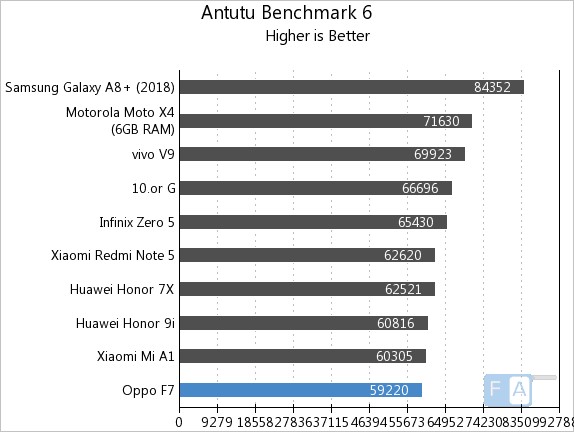
Meanwhile in Antutu 6, the F7 doesn’t do all that well and manages 59220 points.
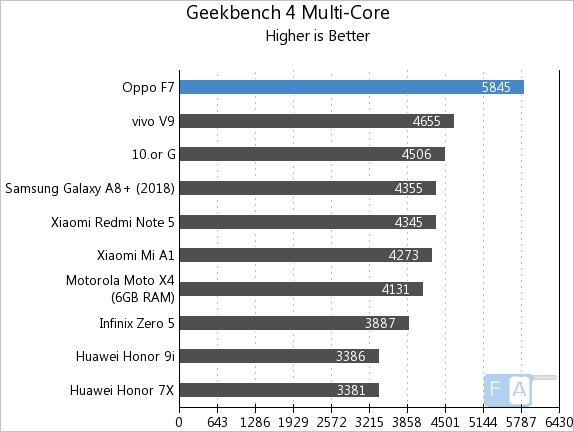
In Geekbench 4 Multi Core, the phone manages 5845 points.
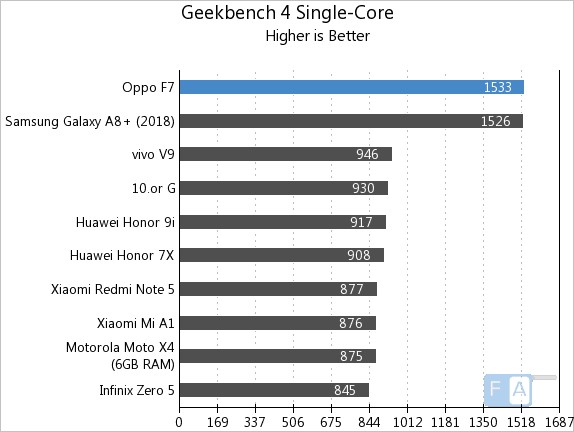
Finally, in the single core Geekbench 4 benchmark, the OPPO F7 managed 1533 points. Overall the phone does well in synthetic benchmarks but more importantly, it excels in day-to-day use and there’s really nothing to complain about in terms of performance.
Display
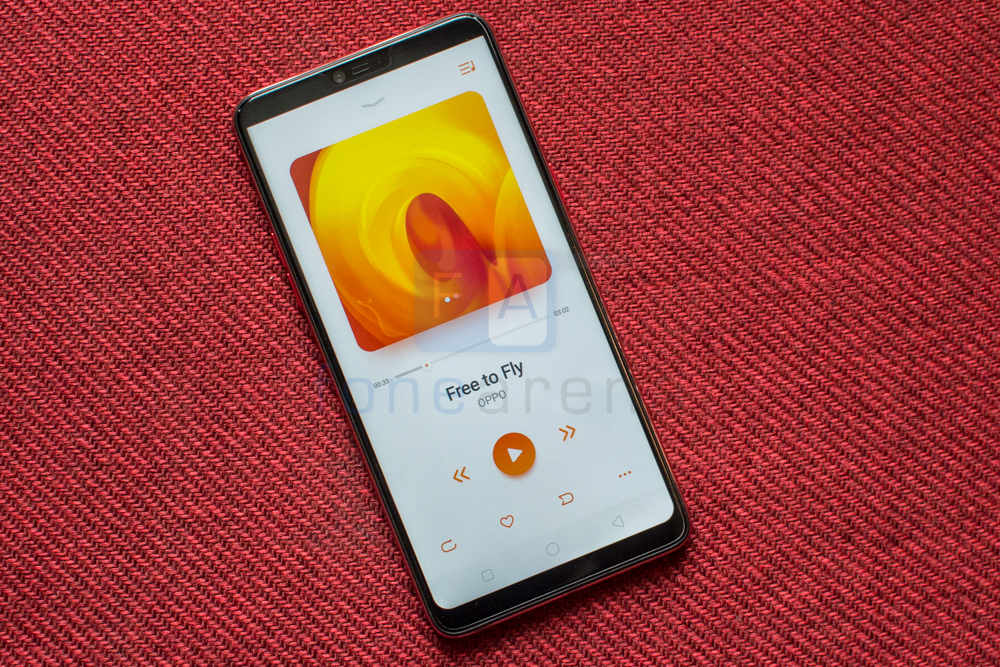
The OPPO F7 ships with a 6.23″ Full HD+ IPS panel with an aspect ratio of 19:9. We found the screen to be really easy on the eyes. The colors are nicely saturated and vibrant. There’s a number of options to change the warmth levels so you can find a look that works for you but we think most users will be happy with how it looks like out of the box. Brightness levels are fairly satisfactory though the glossy screen does pose a problem when in direct sunlight. In a few isolated incidents, we wished that the phone would go brighter. Oh and if you hadn’t noticed till now, the phone has a notch at the top. While we grew to ignore it over time, OPPO has thoughtfully built-in a toggle to switch off the notch. The way this works is by reproducing a black bar that fills up the height of the notch. All UI elements are shifted below the bar. This works pretty well and might come in handy for a fair few users.
Camera
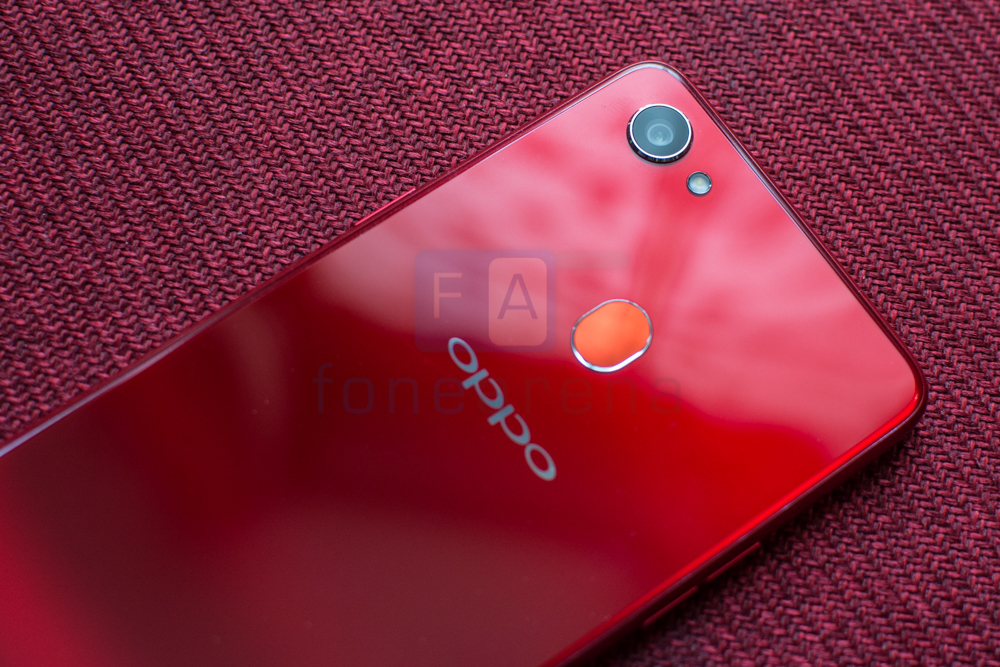
The self-professed ‘selfie expert’, the OPPO F7 has its priorities clearly sorted out. With a 25MP front facing camera and 16MP rear module, the camera is more than up to the task of taking quality shots. There’s a f/1.8 lens over the rear module while the front camera too has a f/2.0 lens. OPPO has taken an AI focused approach towards photography and while the results aren’t the most natural around, they are pleasing to look at. Pixel peeping is not going to do you any favors. Selfies in particular boost up skin tones, detect skin type and make suitable alterations. The end result is something that shaves off a couple of years off your face, pleasing but not necessarily authentic. Check out our sample shots below.
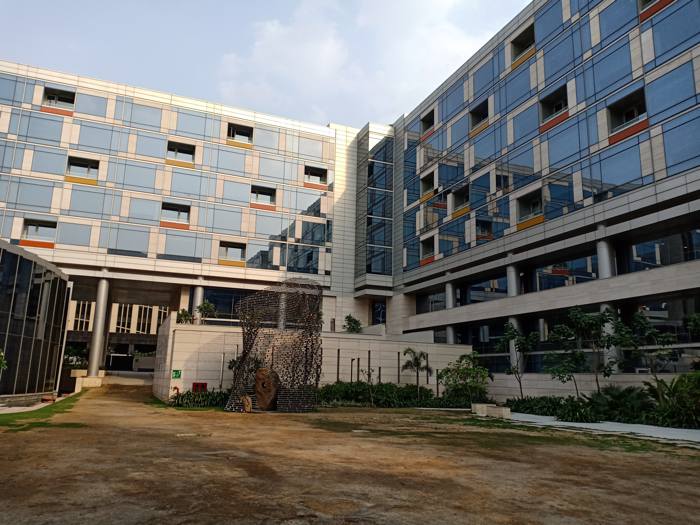
Unfortunately, we weren’t too happy with the video quality of the OPPO F7. Recording tops off at Full HD and there’s no stabilization available. Like the selfie mode, you can however apply a beauty mode and filters to video as well.
Connectivity & Battery Life
In terms of connectivity, the OPPO F7 is pretty well equipped and ships with support for Dual SIM cards both of which can be used for 4G VoLTE. This is in addition to WiFi, Bluetooth 4.2 and GPS. There’s even a dedicated microSD slot that complements the built-in 64GB of storage. And yes, the phone does have a headphone jack.
In terms of battery life, we found the 3400 mAh unit to be satisfactory. The phone easily lasted a full day of use with a bit of juice left over at the end of the day. Unless you are an exceptionally heavy gamer or someone who consumes video content all day long, we doubt you’ll have any issue with the battery life on offer.
Conclusion
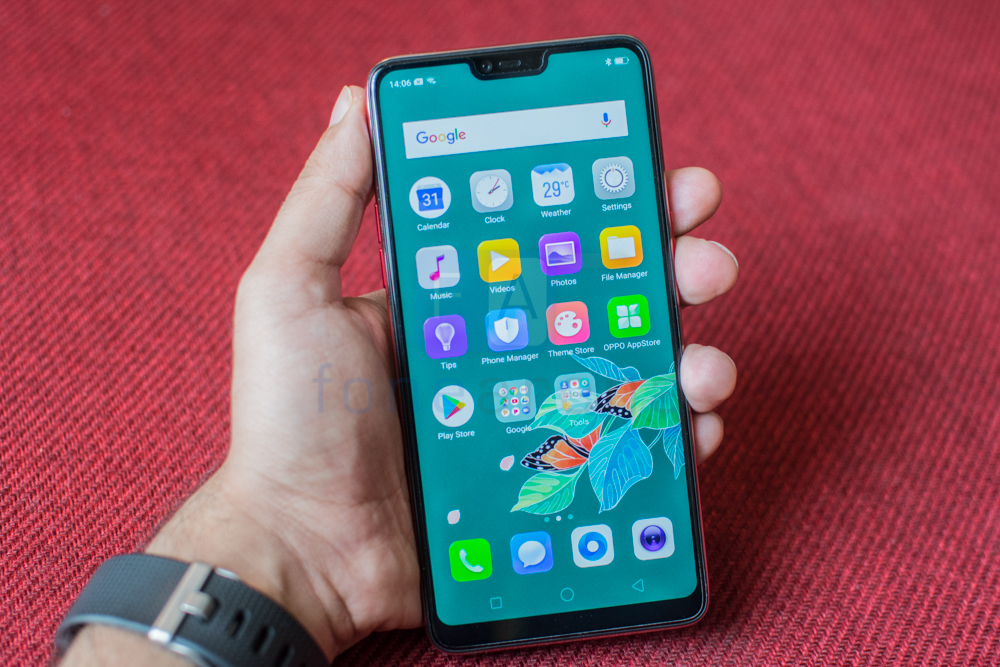
There’s a place for the OPPO F7. It might not be appealing to someone who likes to tinker around with their phone or wants a stock like Android build. The OPPO F7 unashamedly takes the best features from iOS and integrates them into Color OS. It is easy to pick up and use, delivers visually appealing photos from the cameras, has enough power to run anything you throw at it and a big enough battery to last a full day and some. If you are looking for a new smartphone in the sub Rs. 25,000 bracket, the OPPO F7 should definitely be on your list.

